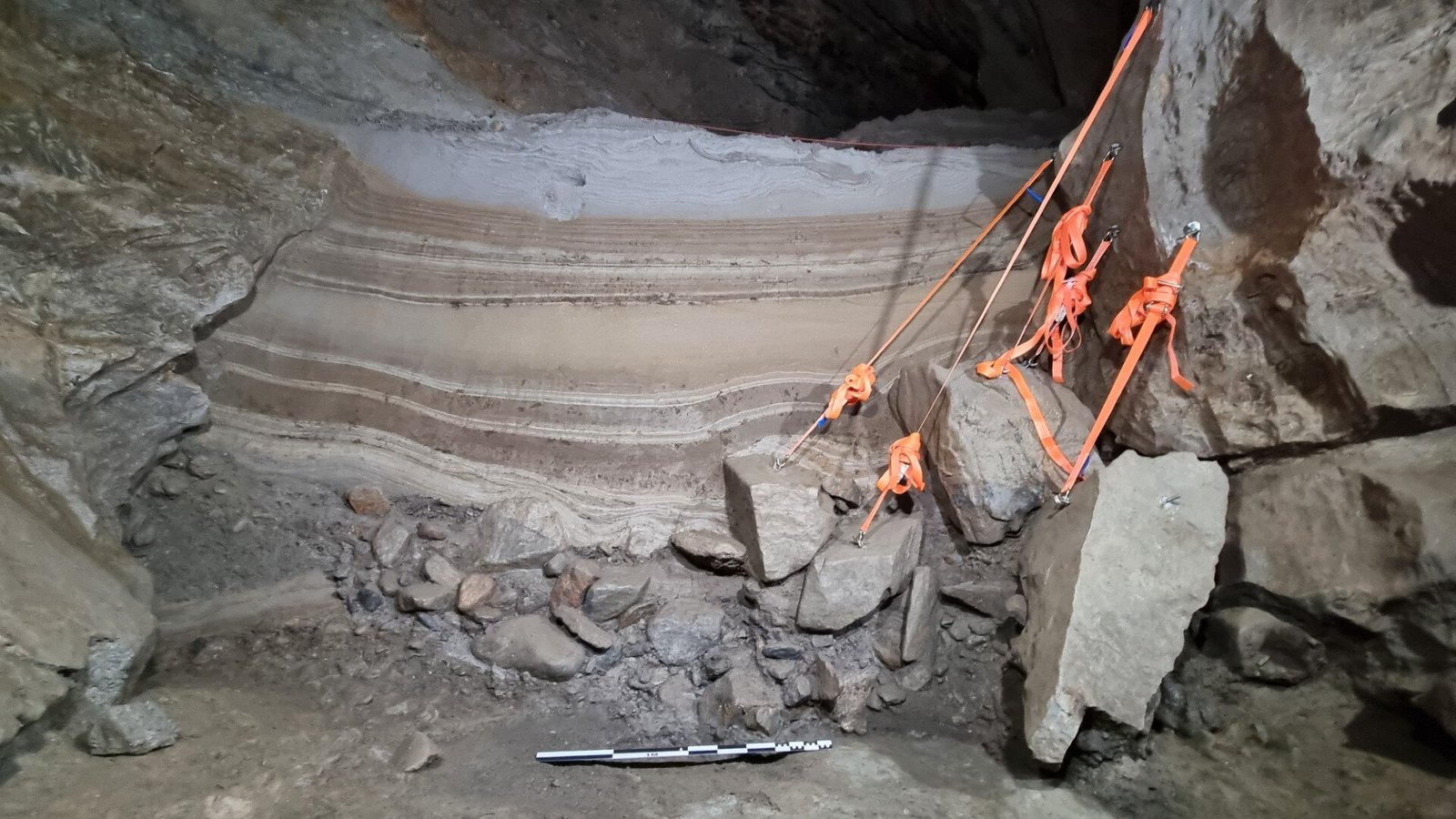
Scientists have uncovered the remains of a vast animal community that lived in the European Arctic 75,000 years ago.
The bones of 46 types of animals—including mammals, fish and birds—were discovered in a cave on the coast of Northern Norway, representing the oldest example of an animal community in the European Arctic during this warmer period of the ice age.
The findings are published in the Proceedings of the National Academy of Sciences (PNAS).
The research team believes the bones will help scientists understand how wildlife once responded to dramatic climate shifts, insights that will be highly relevant for conservation work today.

“These discoveries provide a rare snapshot of a vanished Arctic world,” said the study’s first author, Dr. Sam Walker of Bournemouth University and the University of Oslo. “They also underscore how vulnerable cold-adapted species can be under changing climate conditions, which can help us to understand their resilience and extinction risk in the present,” he added.
Among the animals they identified were polar bear, walrus, bowhead whale, Atlantic puffin, common eider, rock ptarmigan and Atlantic cod. The team also found collared lemmings, a species that is now extinct in Europe and that had never been found in Scandinavia until now.
DNA testing also found that the lineages of these animals did not survive when the colder conditions returned.
“We have very little evidence of what Arctic life was like in this period because of the lack of preserved remains over 10,000 years old,” said senior author Professor Sanne Boessenkool of the University of Oslo. “The cave has now revealed a diverse mix of animals in a coastal ecosystem representing both the marine and the terrestrial environment,” she added.

The Arne Qvamgrotta cave was discovered in the 1990s, when a local mining industry built a tunnel through the nearby mountain. It had remained largely unexplored for nearly 30 years when the research team carried out large excavations in 2021 and 2022 and unearthed the cave’s secrets.
The variety of animals suggests the habitat at the time was largely ice-free along the coast after glaciers had melted. This would have provided a suitable habitat for the migratory reindeer whose remains they discovered.
The presence of freshwater fish means there would have been lakes and rivers within the tundra and there must have been sea ice off the coast for some of the mammals, such as bowhead whales and walruses. The sea ice was likely to be seasonal because harbor porpoises, also found among the animal remains, are known to avoid ice.
Although these animals colonized the region after the glaciers melted during this period, it appears that whole populations died as they could not migrate to alternative ecosystems when the ice returned and covered the landscape.

“This highlights how cold-adapted species struggle to adapt to major climatic events. This has a direct link to the challenges they are facing in the Arctic today as the climate warms at a rapid pace,” said Dr. Walker. “The habitats these animals in the region live in today are much more fractured than 75,000 years ago, so it is even harder for animal populations to move and adapt,” he added.
“It is also important to note that this was a shift to a colder, not a period of warming that we are facing today,” Professor Boessenkool said. “And these are cold-adapted species—so if they struggled to cope with colder periods in the past, it will be even harder for these species to adapt to a warming climate,” she concluded.
The study was a collaboration among the University of Oslo, Bournemouth University, the University Museum of Bergen, the Norwegian University of Life Sciences, and other institutions.
More information:
Walker, Samuel J. et al, A 75,000-y-old Scandinavian Arctic cave deposit reveals past faunal diversity and paleoenvironment, Proceedings of the National Academy of Sciences (2025). DOI: 10.1073/pnas.2415008122. doi.org/10.1073/pnas.2415008122
Provided by
Bournemouth University
Citation:
Scientists uncover 75,000-year-old Arctic animal remains in Norwegian cave (2025, August 4)
retrieved 5 August 2025
from https://phys.org/news/2025-08-scientists-uncover-year-arctic-animal.html
This document is subject to copyright. Apart from any fair dealing for the purpose of private study or research, no
part may be reproduced without the written permission. The content is provided for information purposes only.




